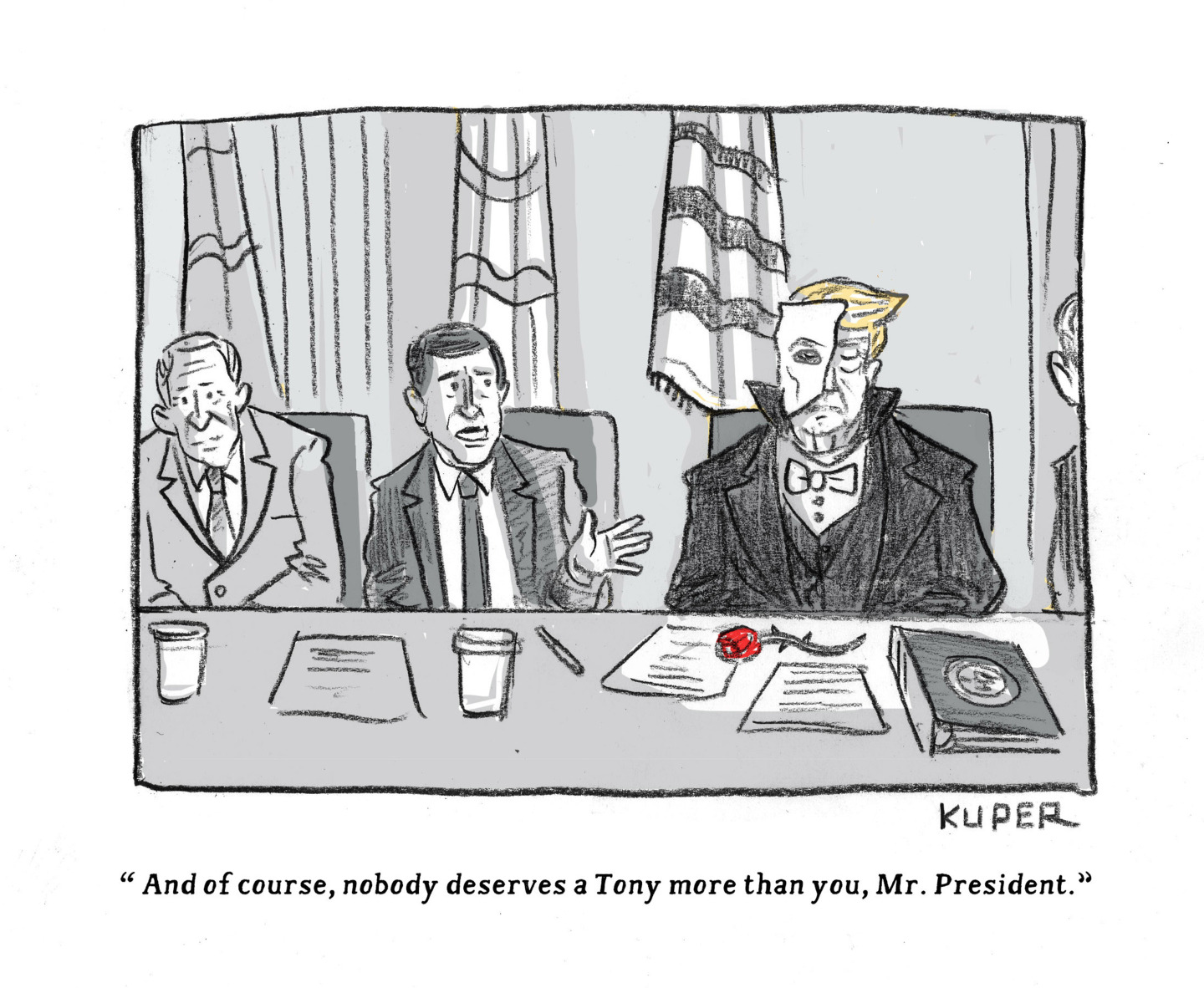The decline of circumcision
A North Dakota woman is suing the hospital that performed her son’s circumcision. Nothing went wrong, but she says doctors never told her the truth—that circumcision is medically unnecessary and inherently harmful. Is it?
How common is circumcision?
It's probably the most common surgical procedure in the United States. Every year about 1.2 million baby boys have the foreskin removed from their penis soon after birth. But over the past 30 years, the practice has been rapidly losing favor; the percentage of newborns who are circumcised has dropped from a high of 90 percent in the late 1960s, to 80 percent in 1980, to 60 percent today. In Canada, the rate is only 17 percent and in Britain 5 percent. Everywhere else in the non-Muslim and Jewish world, circumcision is almost unknown.
Why the decline?
The Week
Escape your echo chamber. Get the facts behind the news, plus analysis from multiple perspectives.

Sign up for The Week's Free Newsletters
From our morning news briefing to a weekly Good News Newsletter, get the best of The Week delivered directly to your inbox.
From our morning news briefing to a weekly Good News Newsletter, get the best of The Week delivered directly to your inbox.
Once "natural" became a desirable adjective, many baby boomer parents—already accustomed to challenging authority—began objecting to the idea of removing a healthy body part. An anti-circumcision movement was born, and many people, including doctors, were persuaded. Recently, numerous insurance plans have re-classified circumcision as elective surgery with no medical purpose; they no longer cover the $150 cost. That has further reduced circumcision's frequency.
Aren't there some medical benefits?
Yes. Circumcision lowers the risk of urinary tract infection in infant boys from 1 in 100 to 1 in 1,000. Some doctors say this alone justifies universal circumcision; others argue that it's better to treat the infection when it occurs. Circumcision also reduces the risk of penile cancer—but this is such a rare disease that there is no consensus on whether it makes sense to worry about it. "For proponents of neonatal circumcision, performing 100,000 operations to prevent two cases of cancer seems entirely reasonable," says David L. Gollaher in his book Circumcision. "Opponents consider this trade-off wildly out of balance." Studies in Africa also show some correlation between circumcision and reduced HIV rates. But experts say that might be a result of cultural practices, not the absence of a foreskin. In 1999, the American Academy of Pediatrics reviewed four decades of medical research and declared that "the benefits are not significant enough to recommend circumcision as a routine procedure."
How did it become so widespread?
A free daily email with the biggest news stories of the day – and the best features from TheWeek.com
In 1870, one of the most prominent physicians in America, Lewis Sayre, was puzzled by the case of a 5-year-old with paralyzed legs but no apparent disease or other symptoms—except inflamed genitals. Sayre suspected that the boy's neural energy was being "imprisoned" by his foreskin. He trimmed the prepuce and, astonishingly, the boy was cured. Soon Sayre was performing circumcisions willy-nilly, and other doctors followed suit. By the end of the 19th century, neonatal circumcision was recommended for the prevention of dozens of illnesses, from constipation to tuberculosis. But its popularity stemmed primarily from its alleged success in preventing one of mankind's most dreaded afflictions.
Cancer?
Masturbation. In the Victorian era, masturbation was considered to be a dangerous obsession that could lead to mental illness and even death. Once the hypersensitive foreskin is removed, "the adolescent has his attention drawn to his penis much less often," said a leading British physician named, honestly, C.W. Cockshut. John Harvey Kellogg, the famous 19th-century health guru, advised doctors to perform circumcision without anesthetic, "as the brief pain attending the operation will have a salutary effect upon the mind, especially if it be connected with the idea of punishment." Eventually, circumcised penises came to be seen as simply "clean." In World War II, the military made circumcision compulsory, which made the practice nearly universal. Regardless of medical rationales, parents wanted their sons to look like their peers and like Dad.
How is it done?
It's a relatively simple, 10-minute procedure. The surgeon pulls the foreskin away from the glans, uses a clamp to hold it separate from the penis, and then slices it off. Although circumcision opponents highlight a tiny number of horrifying accidents, complications occur in only about 1 in 400 cases, and are usually limited to mild bleeding or infection.
Is it painful?
What do you think? As recently as the 1980s, most doctors assured parents that babies didn't really feel pain. In fact, evidence shows that infants feel pain just as acutely as adults, if not more so. The 1999 American Academy of Pediatrics policy affirmed that a local anesthetic should always be used during circumcisions, though many doctors still shrug this off.
Are there other drawbacks?
The main harm alleged in the North Dakota lawsuit is "diminished sexual sensation." Circumcision opponents say that when the glans is unnaturally exposed, it thickens and becomes less sensitive. Critics also argue that circumcision causes permanent psychological damage, and that it violates the United Nations Declaration on the Rights of the Child. A number of extremely committed activists, such as the National Organization to Halt the Abuse and Routine Mutilation of Males, advocate foreskin restoration. They employ devices fashioned from weights and elastic bands to stretch the remnants of the prepuce back over the head of the penis—a three- to five-year process. The men compare their motivation to that of women who get breast implants after cancer surgery. "We're just not accustomed, as yet, to thinking men have such feelings and needs," says one. "But they do."
An ancient practice
Circumcision began as a religious ritual, springing up independently in cultures around the globe. Anthropologists have found circumcised Egyptian mummies that date to 4,000 B.C. For millenniums, Jews and Muslims have circumcised boys in religious ceremonies; the practice also has ancient roots in cultural groups in East Africa, Indonesia, Australia, and elsewhere. One 17th-century European noticed that many Native Americans were circumcised, and decided they were the lost tribes of Israel. The widespread occurrence of such an improbable custom has long puzzled psychologists, who've suggested several possible explanations. Bruno Bettelheim theorized that circumcision endowed male babies with more power, by freeing up the glans and letting them experience the bloodletting of menstruation. Freud believed the ritual was designed to make young males less masculine and less threatening to both their fathers and civil society. "Circumcision," said Freud, "is the symbolic substitute of castration."
-
 5 prize-winning cartoons about Donald Trump's appetite for awards
5 prize-winning cartoons about Donald Trump's appetite for awardsCartoons Artists take on operatic ambitions, peace prize pacifiers, and more
-
 Will Trump’s $12 billion bailout solve the farm crisis?
Will Trump’s $12 billion bailout solve the farm crisis?Today’s Big Question Agriculture sector says it wants trade, not aid
-
 ‘City leaders must recognize its residents as part of its lifeblood’
‘City leaders must recognize its residents as part of its lifeblood’Instant Opinion Opinion, comment and editorials of the day